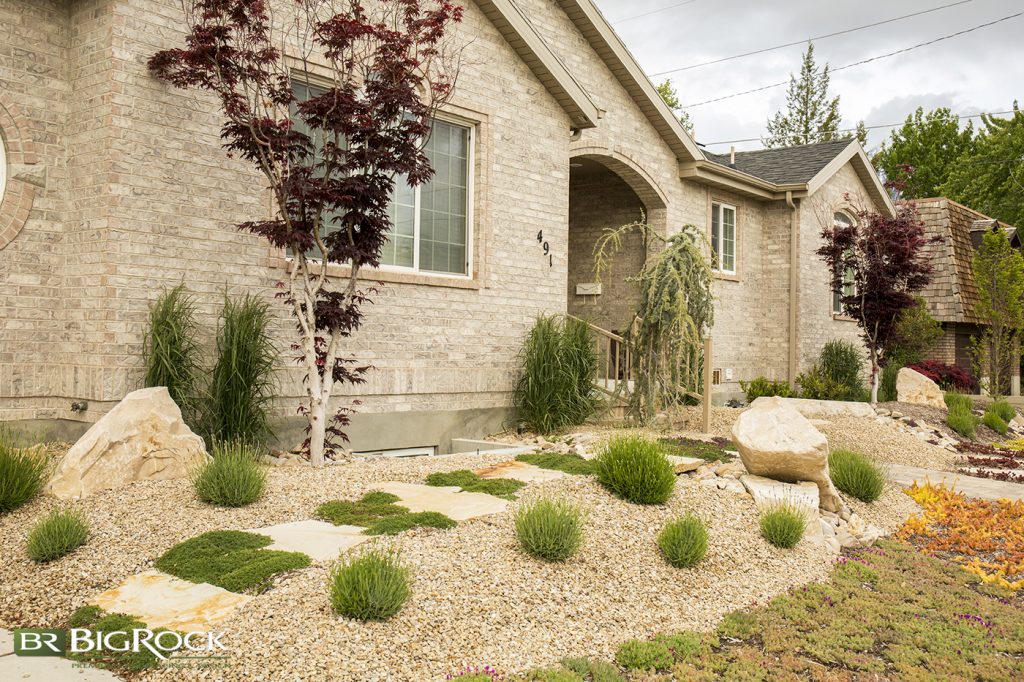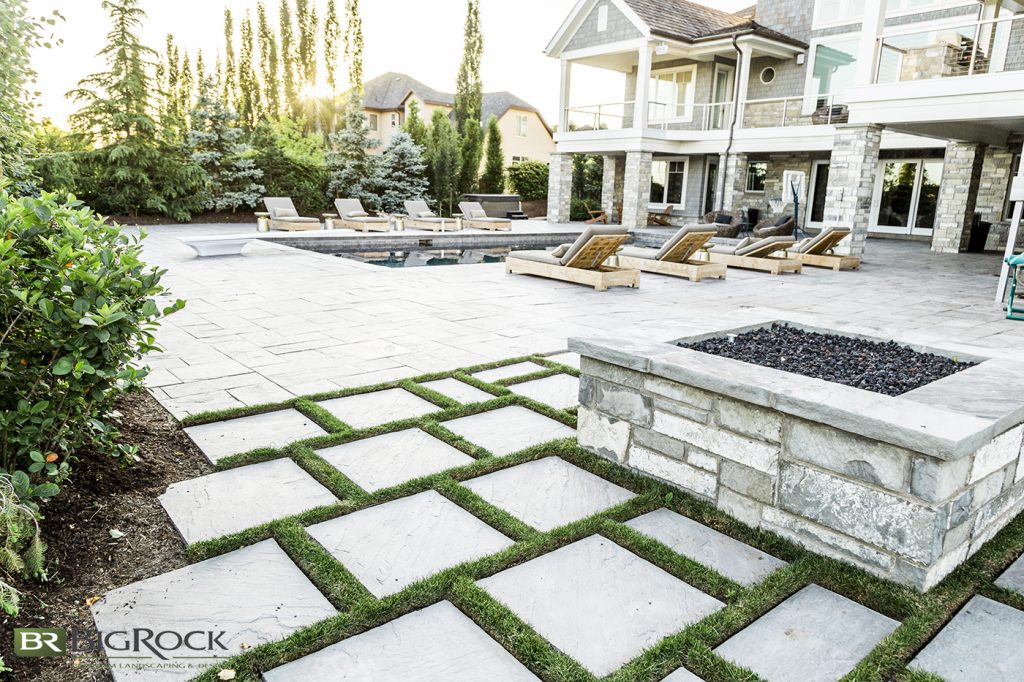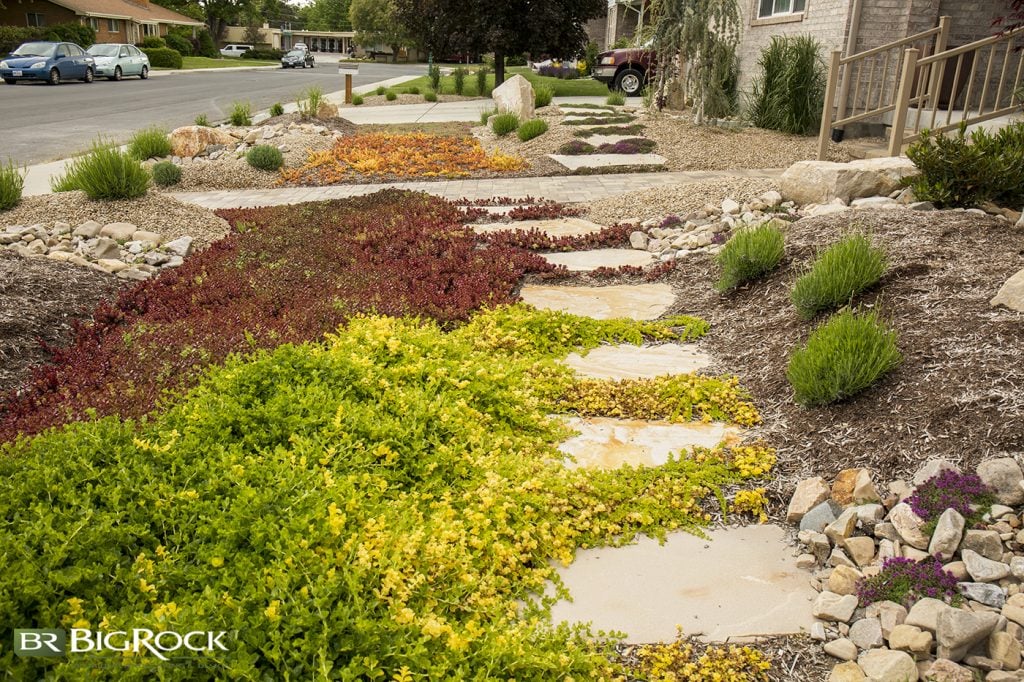
How To Adjust Your Routine For Watering Plants During A Drought
As spring turns into summer, rainfall decreases, and temperatures soar, many of us have the worry of drought on our minds. If you’ve lived in drought-vulnerable areas in the past, you know that now is the time to start thinking about smart ways to get you and your landscaping through the drought with as little damage and stress as possible, and that includes making adjustments to your routine of watering plants during a drought.
Now, every yard is different in any number of ways—from size to amount of landscaping, hardscaping, or xeriscaping to the specific plants you’ve chosen for your landscape design—so it’s important to make decisions based on your own personal outdoor space. It’s also a good idea to check in with your professional landscaping company to see what input they have as well. But in the meantime, here are some general rules and tips for how to adjust your drought watering schedule to keep your plants alive and well during the hot, dry times ahead.
Your Routine For Watering Plants During A Drought
One of the number one things you’ll hear in your community during a drought is how important it is to conserve water, and specific watering habits are a great way to do that while keeping your plants alive during the drought.
The first thing you should do is make sure you plan on watering your garden, trees, and other plants less frequently, but deeply. This will help encourage your plant life to grow deeper roots that are less susceptible to drying out, becoming brittle, or dying altogether. Keep in mind that this less frequent soaking should also be done slowly so water has time to sink in and not run off, doing your plants no good and simultaneously increasing waste.
The next thing you want to make sure of when watering your plants during a drought is that you’re doing it at the right time of day. Cool temperatures are key for successful watering for a couple of reasons—it will help you avoid high evaporation rates and the risk of scorching plants that become wet in the dead heat of the day. Plan your drought watering schedule for early morning (before 7:00 am even) or well after the sun has set (after 10:00 pm).
One more tip for dealing with a drought in regards to your yard is to regularly check in with your plants and soil. If things are looking dryer than hoped for, check the dirt to a depth of about two inches. If there’s no moisture, it’s probably time to water again if allowed by local ordinance.

7 Tips To Help Your Plants Survive During The Drought
If you’ve invested any time, effort, or money into your landscaping, there’s no doubt you’re going to want to keep your plants alive during the drought. Here are seven helpful tips for how to treat your yard well during the upcoming dryspell.
Use Drip Irrigation
Using sprinklers and wand sprayers is convenient but it’s also a great way to waste water during hot temperatures because of evaporation and runoff. Your plants need water right at soil level in order to drink deeply and retain the moisture they need. Drip irrigation systems, soaker hoses, and self-watering containers can be the saving grace for your plants during a drought.
Mulch
Mulching is a great way to lock in those long soaks while also adding a critical layer designed to protect plant roots against the heat of the sun. An inch or two of shredded bark or leaves surrounding flowers and annual garden plants and a few inches of it around bigger shrubs and trees will keep the soil cooler for better growth and resilience.

Don’t Skip the Fertilizer
Some people will recommend that you skip fertilizing during a drought, but we think that is a mistake. Your plants and trees still need nutrients, so feed your plants with high-nitrogen fertilizer during a drought. You still need to make sure your plants are getting what they need, even when water is limited.
Don’t Prune
Pruning also encourages new growth in plants, so it’s best to steer clear of these activities during a drought. Pruning also “wounds” limbs and forces healing in trimmed areas which could double the water an unpruned plant might need.
Harvest Rainwater
It may be rare during a drought, but if rains do come, it’s a good idea to have a way to harvest it and use it for future watering. You can utilize rain barrels, gutter chains, and clever planting patterns (in non-drought seasons) to capture and guide rainwater to the parts of your landscaping that need watering the most.
Install A Smart Sprinkler
Smart sprinklers are equipped with ET (evapotranspiration) sensors that monitor the evaporation from the soil, transpiration by plant materials, as well as wind and rain forecasting from local weather sources. Input from ET sensors help your sprinklers make real-time adjustments so that your landscape only receives the exact amount of water it needs, and no more. Sprinkler systems fitted with ET sensors have been shown to reduce outdoor water use. A recent study showed homes based in Las Vegas Nevada that were equipped with ET sensors saw an average 20 percent reduction in water usage.
Focus On Trees And Shrubs
As much as it may pain you to let the lawn go brown, grass is fairly resilient and can often survive drought conditions, coming back in future growing seasons. However, trees and shrubs sometimes require more care and are more difficult to replace if they die off due to a lack of water. Plus, the shade and habitat they provide are often key to the ultimate success and enjoyment of your landscaping for future seasons. Apply a soaker hose at a tree or shrub’s drip line (the circumference measured at the outer reaches of its canopy) when the soil is dry to about 6-8” deep to help keep those bigger plants alive during a drought.
Be Willing To Change Things Up
If you can see that, year after year, your landscaping isn’t suited to your particular area, consider replanning a xeriscaped backyard landscape design that is full of beautiful drought tolerant plants and trees that won’t stress under your region’s weather conditions. However, you don’t have to tear out your green plants and lawn during a drought IF you are watering correctly! But it depends on how hands-on you want to be—when homeowners are facing drought conditions, it does require more hands-on management of your irrigation systems. If you prefer a “set it and forget it” process to manage your landscaping, it might make sense to make your yard more drought tolerant and consider replacing some of your thirsty areas with more hearty, drought-friendly plants and xeriscape.

Have More Drought Questions About Your Yard?
Have questions about how to care for your plants during a drought? Need more yard tips for the drought season in Utah? Ready for a landscape remodel to prepare your yard for annual drought conditions? You’ve come to the right place. Employing the best landscaping services in your area is a great place to start. At Big Rock Landscaping, we’re not only experts on gorgeous landscape design, but we know exactly how to accomplish a look you’ve always wanted while using the right native plants and proper processes to ensure a long-lasting landscape–no matter the weather.
With Big Rock, you get a talented team of expert communicators, designers, and installers that have your back every step of the way—from vision to final touches, and even maintenance services year after year.
Ready for your dream yard to come to life and stay that way, even during a drought? Contact Big Rock Landscaping today!


Leave a Reply
You must be logged in to post a comment.